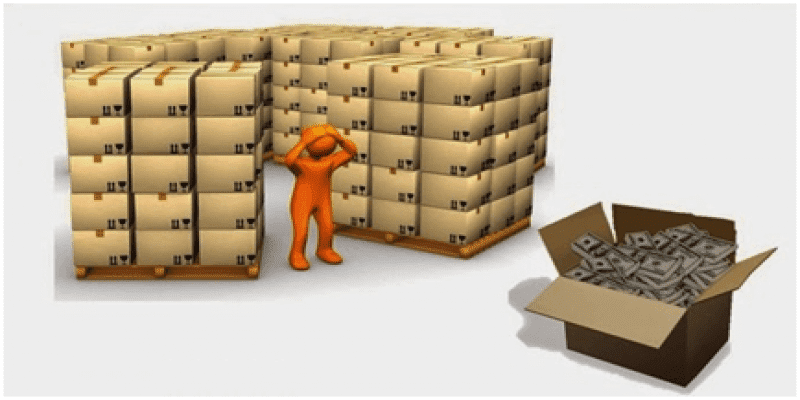The Supreme Court on March 29 announced its decision to ban BS-III vehicles. The decision was taken with the view that health of citizens was more important than commercial interests. The BS-IV vehicles are more emission efficient (1 gm/per kg) as compared to BS-III motors (2.30 gm/ per kg).This changeover to BS-IV could lead to a considerable reduction in the particulate matter emission which may perhaps drop to 80% in case of trucks and 50% for cars.
This is great move given that vehicular emissions account for about 61% of the greenhouse gases from various activities. Any reduction is an advantage for the society in the long run.
At the time when the decision was announced, more than 9 lakh units of BS-III vehicles were unsold among which 7.51 lakh units were two-wheelers and the rest commercial and passenger vehicles.Since India is the last two wheeler market, our countrymen took full advantage of this ruling and more than 8 lakh units got sold in two days’ time. Chances are that this sales figure could become a world record!
As of today automotive manufacturers have stopped production. Tata Motors, Ashok Leyland, Hero and ilk will resume with large scale production of BS-IV vehicles after implementation of various norms for the industry. Some of them may even recall some of the BS-III vehicles and upgrade them to BS-IV.
This episode could well be a lesson for all types of businesses. Being a student of Lean management I could see that, first, inventories from RM to FG meant for BS-III vehicle production still lie in the pipeline which are eating up the cash-flow. Secondly, the companies overproduced so much that 50% of vehicles are yet to be sold despite heavy & discounted selling over the last two days. Thirdly, to support and sustain a renewable way of producing products and/or services which do not harm us or the environment by reducing environmental impact and resource consumption. So,
1. Manage your inventories efficiently and eliminate Waste of Inventory
- SIAM President and Ashok Leyland's Managing Director Vinod K Dasari said that an OEM will have 4-6 weeks of inventory, dealers will have 2-4 weeks of inventory and the customers take about 4-6 weeks to convert it into a vehicle before it is registered. That means anywhere between 10-16 weeks of inventory and on an average there are around 60,000 CVs sold in India a month. This would mean 150,000 vehicles for a normal pipeline of 10-16 weeks. "We have committed to bring this numbers down to 75,000, which is half of the lowest level of inventory," he said. On top of it, about half of this inventory is now allowed to be registered, if it is sold before the SC order. This will leave the industry with 35,000 vehicles. Business Standard, April 3, 2017
Inventory management becomes all the more crucial when the organisation is doing not good business. Despite being in a leading position, many organisations experience a constant negative cash flow caused due to inventory management issues and lack of ability to capitalise on sales opportunities.
Good inventory management is considered a fundamental ingredient to becoming a World Class Organization. The ideal inventory management system should ensure neither surplus and nor shortage. A lower inventory turn ratio means accumulation of excess inventory. Conversely, a higher ratio implies strong sales. The aim should be to move inventory so that money keeps changing hands and that the cash flow is smooth.
Leading organisations globally have developed procedures and concepts which led to transforming relations among suppliers, purchasers and Customers. One such well known company is Toyota which perfected the “Just in Time†planning method of achieving high volume sales using minimal inventories.
The leap forward would be to build a stable buyer-supplier relationship which is collaborative in nature. This means both, organizations and suppliers work in unison on long term contracts and schedule deliveries according to a shared forecast which is updated frequently. External as well internal supply thus can eliminate large lot sizes leading to flexible distribution with enhanced responsiveness to change in needs of the customer. After all, inventory is not alone! Transportation, storage, administration, obsolescence, capital, handling, pilferage of inventory contributes around 20-25% to the cost of doing business. The ability to smoothly manage inventory is vital to providing excellent customer service, efficiently utilizing resources, and maximizing profits.
2. Stop overproduction – start consumption based planning
Overproduction is simply the non-valueadding use of available capacity instead of using it to satisfy customers’ needs. Generally it indicates the ‘busy fool’ syndrome with true process performance being distorted as a result.Overproduction is direct result of variation in customer demand. As one moves up the supply chain away from the customer the demand variability increases. The small changes in consumer demand result in large variations in orders placed upstream. Any bell curve in dispatches leads to non-performing Inventory in the form of WIP & FG. Conventionally, an inventory buffer is created called “Safety Stock†to overcome the forecast errors. Safety Stocks are like lotteries, you may win!

Thus it is important to know what drives customer demand planning and inventory consumption. A forecast analysis enables the business to sense the changes in Customer demand and improve their satisfaction. By integrating information the planning can be executed to replenish the required inventory.
By strategizing for a consumption based planning, businesses can figure out the inventory and other resources. The effect of variation in the marketing forecast can be overcome by implementing weekly rolling plan for Linear Production. It provides for a framework smoothen variations in production volumes and bring linearity of business. It bridges the gap between opinion and business intelligence, with problem solving by trial and error in demand forecasting.
The right selection of goods and services must be supplied to customers in the most efficient way possible. Each process along the value chain must function efficiently and it should also co-ordinate and integrate with the upstream and downstream processes.Creating Pull in the organization at levels and processes in order to facilitate Just in Time concept, requires a solid groundwork to eliminate sources of defects & delays and ensure smooth flow of information and material. Pull fuses flexibility of production facility along with strengthening the processes to produce only “Valueâ€. Understand relationships of Takt Time, Batch Size and Capacity to design better and more effective production systems.
Lean Manufacturing questions the role of inventory at each level and defines it as a waste to reflect the imperfections that the system has. Lean Manufacturing is in direct opposition with traditional manufacturing approaches characterized by use of economic order quantities, high capacity utilization, and high inventory.
3. Support and sustain a renewable way of producing products and/or services by reducing environmental impact and resource consumption
61% of emissions are directly contributed from the vehicle segment. Reducing environmental impacts and resource consumption in manufacturing processes is one of the most pressing issues for all sectors. Since Lean and Green go hand in hand, a smart way would be to combine both initiatives, for together they can be focused towards achieving environmental protection goals with and enhancing results. Being Lean & green means using the tools and concepts of lean operations and adding green metrics and measures of excellence to it. This methodology minimizes waste and pollution achieved through research and process design.

It supports and sustains a renewable way of producing products and/or services that do not harm us or the environment. Our aim should be to conserve natural resources for future generations. Adoption of Energy efficient Green technologies could also help minimize the harmful effects on human health and environment by selecting eco-friendly materials and practices.


Comments / 0